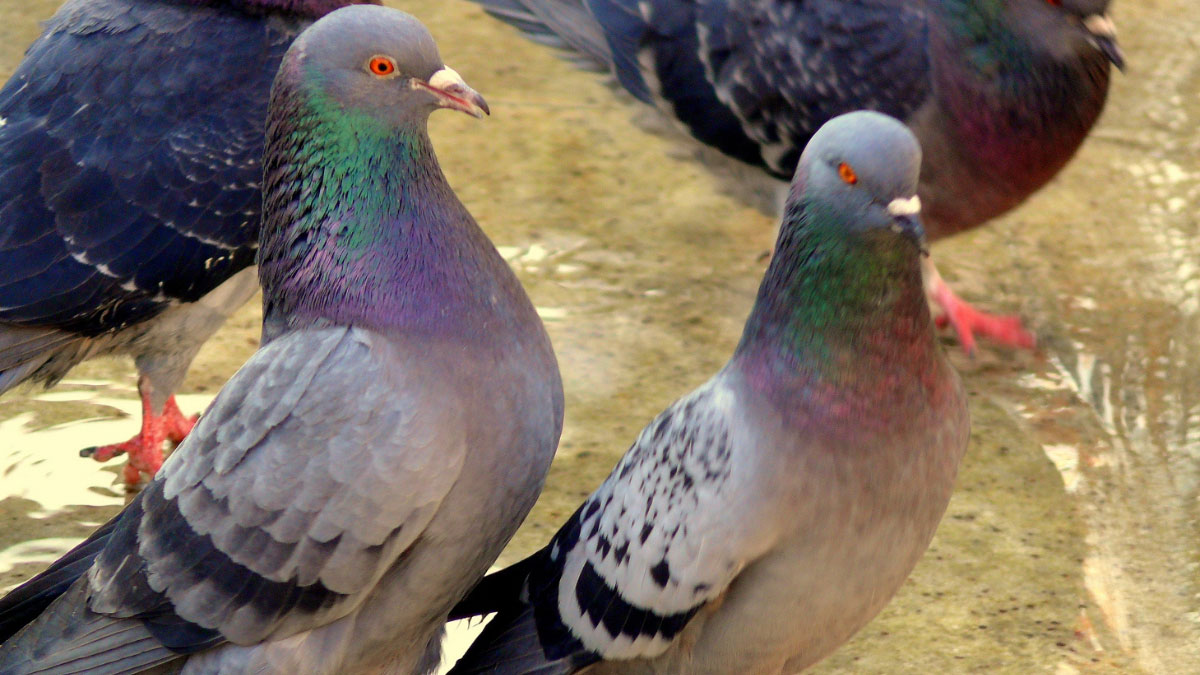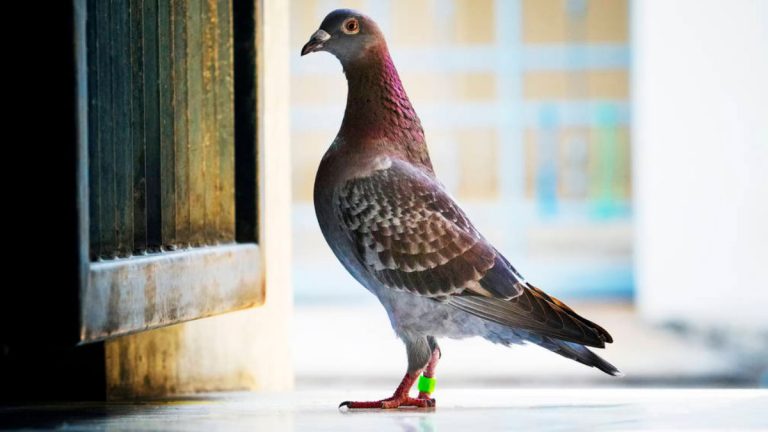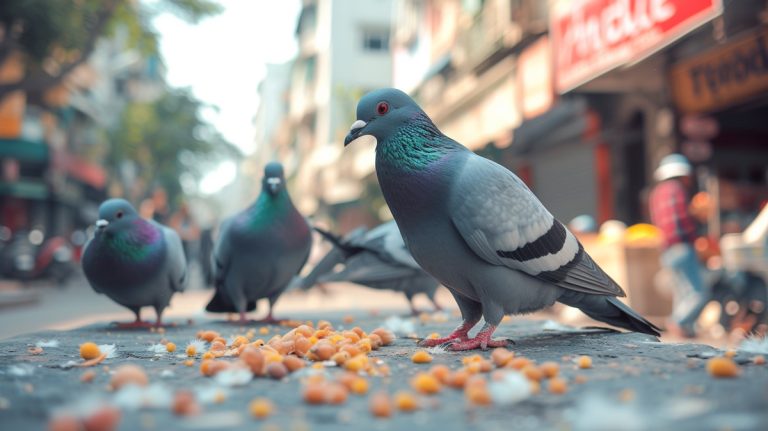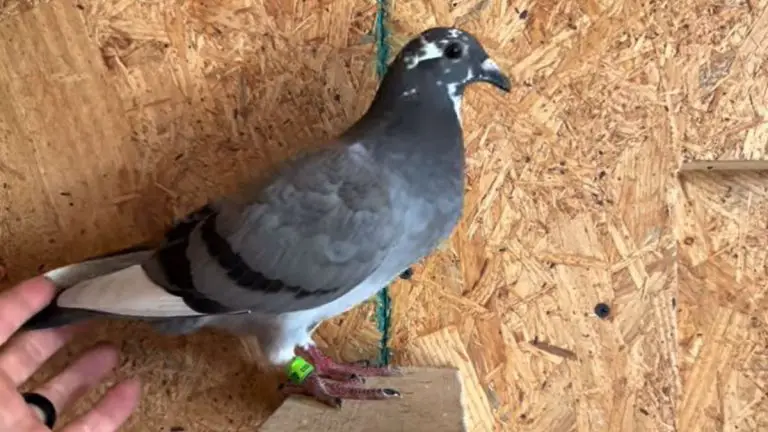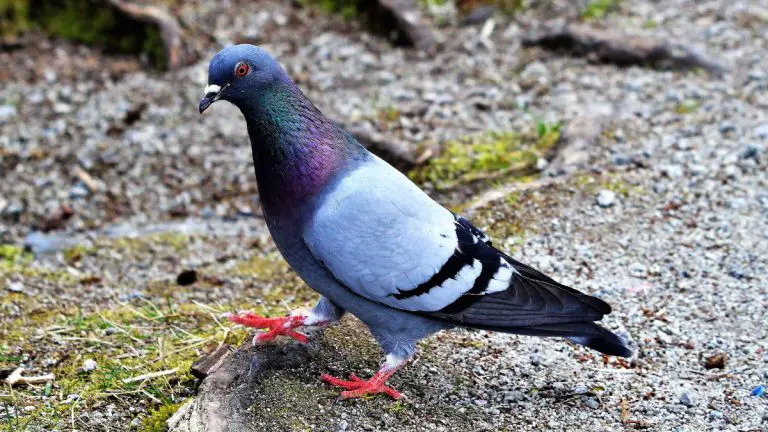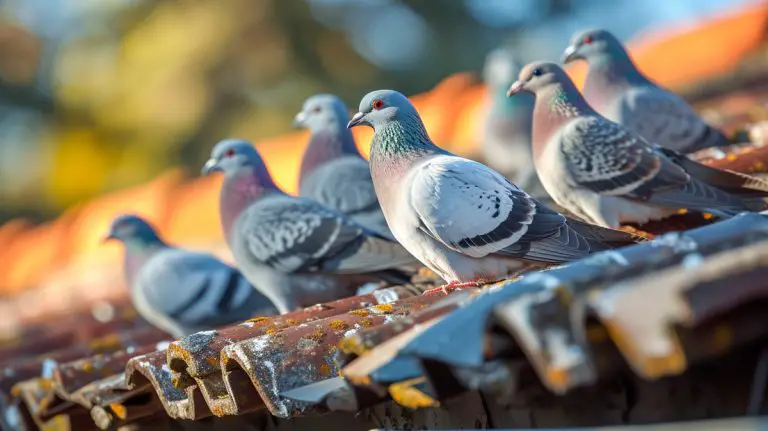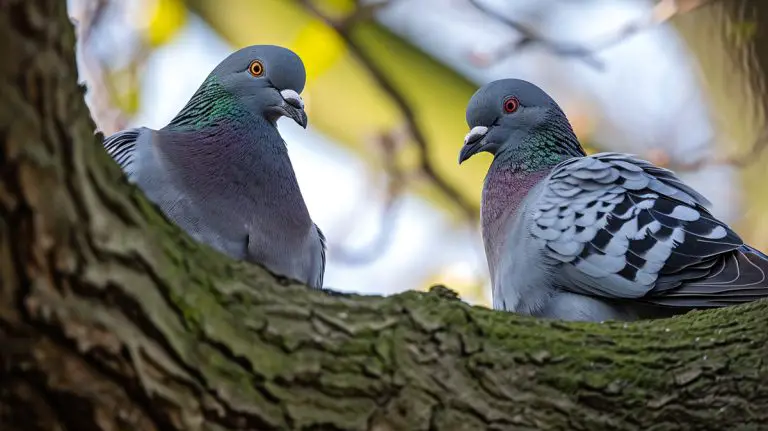The Role of Visual and Acoustic Cues in Pigeon Mating Behavior
Pigeon mating behavior refers to the characteristics that they show through different cues during their breeding season. Those cues will indicate their pair selection and mating strategies. Hence, understanding their mating behavior well will help you to evaluate their reproductive success.
But what is the role of visual and acoustic cues in pigeon mating behavior? These cues will indicate the reproductive maturity of the pigeons. Also, during the courtship period, these two cues will stimulate the female pigeons to choose and mating with the right partner.
In this article, we will discuss pigeon mate selection strategies depending on these cues. You can also well-understand how interactions between these cues control the bird behavior during the breeding seasons. So, keep reading till the end.
The Role of Visual Cues in Pigeon Mating Behavior
Generally, pigeons choose their partner depending on visual cues like feather quality, size, and coloration.
- Feather Quality: The feathers of a healthy pigeon should be silky, shiny, flexible, and waterproof. The good feathers of the pigeon indicate that they are healthy and can produce good-quality offspring.
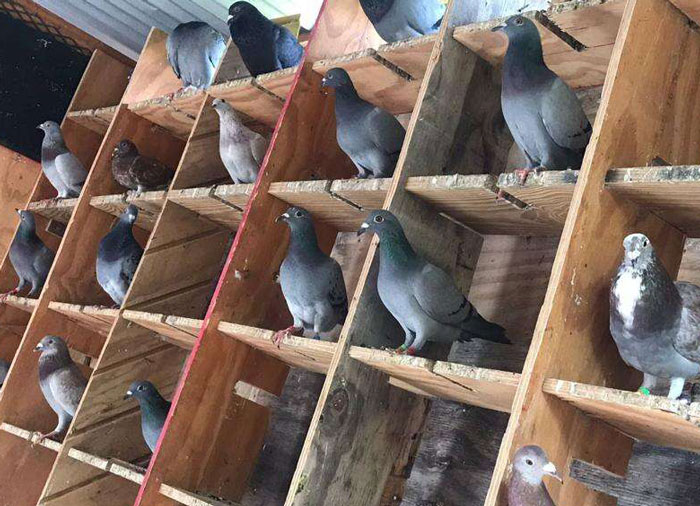
Generally, puffing up feathers is a familiar pigeon mating behavior cue.
- Size: Pigeons can tend assortative mating. That means both male and female pigeons tend to choose partners of larger or similar size.
The larger the size of the pigeon, the higher the chance of impressing the opposite sex and reproductive success.
- Coloration: Generally, male pigeons use cosmetic coloration to attract their to be female mates. Pigeons have powder feathers, and their coloration becomes significant during their breeding season.
Besides, this coloration is also an indication of their reproductive maturity.
Specific Visual Cues In Courtship
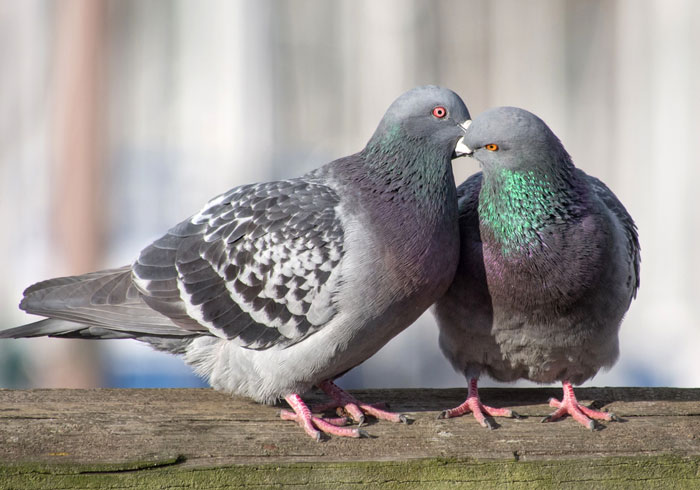
Courtship is an essential part of pigeon mating behavior. Both the male and female will show some visual stimuli during this courtship. Those are:
- The male pigeon can fly up and down for a display to impress the female pigeon.
- Sometimes, if any cock is interested in any hen, it may chase after the hen to get her attention.
- Before pairing, the cock can also put a bow display to show his interest. In this case, the cock will bow and hop toward the hen and keep doing this to get attention.
- They can try to get attention from the opposite sex by puffing up their feathers.
- If the hen is interested in the cock, it will express its acceptance by dropping the wings on the ground.
Importance Of Visual Cues
The pigeon’s reproductive success or failure will depend significantly on the visual signals during the breeding seasons. When they receive the information from any visual cue, this will end up in their hypothalamus.
According to avian physiology, due to this stimulation, a release of the gonadotropin-releasing hormone will occur. Then, the anterior pituitary will also produce luteinizing and follicle-stimulating hormones.
These hormones help in producing sex hormones and gametes. Besides, these hormones also influence the male pigeons to display in front of female pigeons.
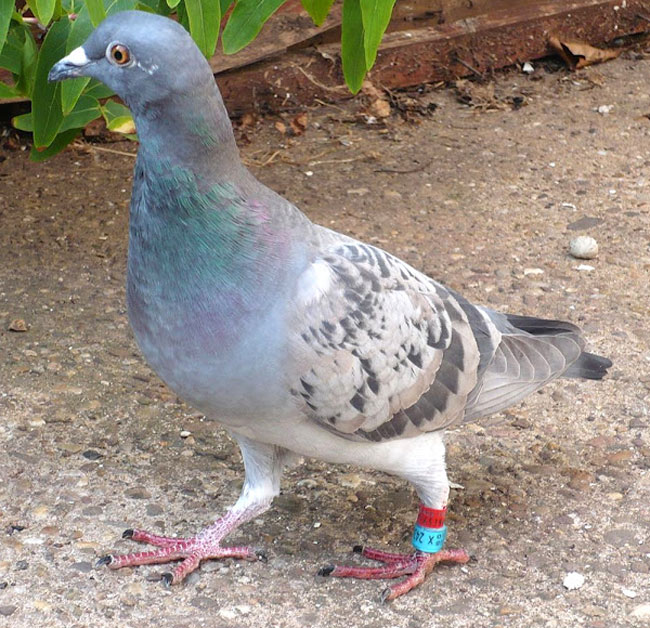
Generally, the hens will pick the cock with the most synchronizing behavior, characteristics, and ultraviolet plumage coloration. Cock’s feather quality and coloration will refer to their sexual maturity as well as reproductive success.
Also, the cocks will flap their wings aggressively to intimidate their rival in mating. If they can’t protect their territory well, there is a high chance that other cocks will take the chance to approach the hens.
Moreover, sometimes, the cocks make nests to impress the hens; and the better nest maker has a higher chance of mating with the hen.
Any slight variations in the visual stimuli can show several consequences, such as:
- The male can get injured severely during the mate competition. This will result in a low rate of reproduction success.
- Too many flying displays can get the attention of predators. As a result, the predation rate of pigeons will increase instead of the reproduction rate.
- Sometimes, the hen will inspect the nesting area to choose between two cock. According to this animal mating behavior, if the nesting is not worthy enough, the hen will reject the cock.
The Role of Acoustic Cues in Pigeon Mating Behavior
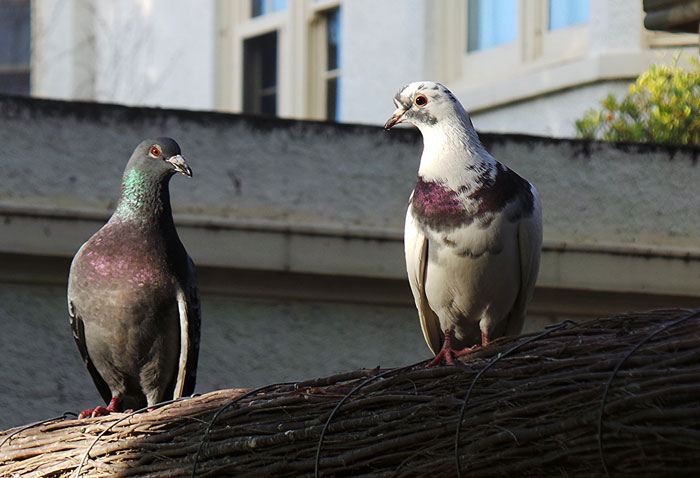
Animal communication greatly depends on several vocalizations which have specific meanings. Let’s know about these acoustic signals in the pairing behavior of pigeons in detail:
- Pigeons can make “coo” sounds for a prolonged time to attract the pigeon of the opposite sex.
- Trilling “coos” are also a common form of pigeon courtship signals. In this case, their coos will rise first, then fall again.
- When the cock is ready for mating, it will make deep “woh woh” sounds. They generally make this type of sound for advertising purposes.
- Female pigeons also coo during the incubation period staying inside the nest. This is also a part of the parental investment after laying eggs.
- Sometimes the cock also makes sounds like wing clapping when it takes off. This is a post-mating show-off display for them.
- They also make sounds like aggressive grunting and purring while protecting their territories from other pigeon-breeding pairs.
Role Of Acoustic Cues
Pigeon communication mostly depends on their numerous vocalizations. Here are the roles of these acoustic stimuli in their breeding seasons:
- The hens mate with the cock whose cooing noise sounds more pleasing to her.
- Sometimes, the prolonged coos of the cock also make other cocks stay away from the hen.
- For some pigeon species, the display sometimes sounds like chattering or quacks instead of coos. Pigeons can specify and detect their species by hearing the noises.
- When the male or female pigeons start cooing in their nest, it indicates their reproduction maturity. This is a way of inviting a pigeon of the opposite sex for breeding.
Influence Of Acoustic Cues On Pigeon Mating Behavior
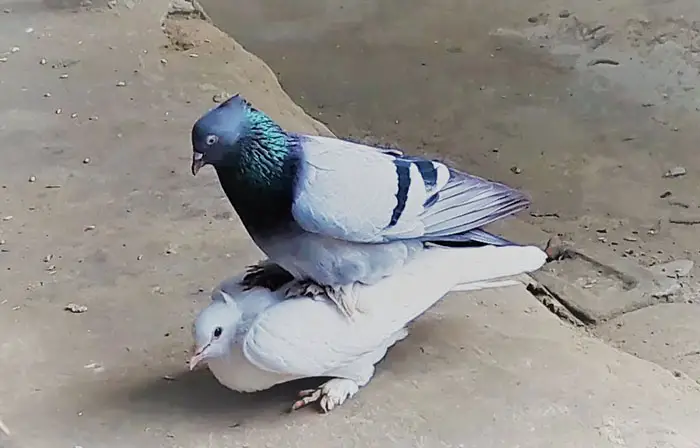
Acoustic cues can indicate the pigeon’s quality and eventually help in mating behavior. Let’s know about this in detail:
- According to evolutionary biology, mating between similar species has a better chance of producing good-quality offspring. When they hear the mating calls of pigeons, they can distinguish their species. So, they will choose pigeons that belong to the same species.
- The deep territorial noise of the male pigeon also shows their intimidating aura. As it shows cock’s boldness and ability to protect nests, it attracts female pigeons powerfully.
- After choosing a partner, the female pigeon complements the calls of her partner male pigeon. This will encourage the male to collect twigs for their nest.
Interaction of Visual and Acoustic Cues
Both visual and auditory signals are part of animal reproductive strategies. In the case of pigeons, the interaction between these two cues occurs more during their breeding seasons, such as:
- During the display show, the cocks show off their tails, wings, coloration, physique, and cooing noise.
- Male pigeons will show interest in any female pigeon by putting both a bow and coo display to impress her.
- After choosing the partner, the pair will bob their head and twitch their wings delicately. They will also complement each other’s calls in their nesting spot.
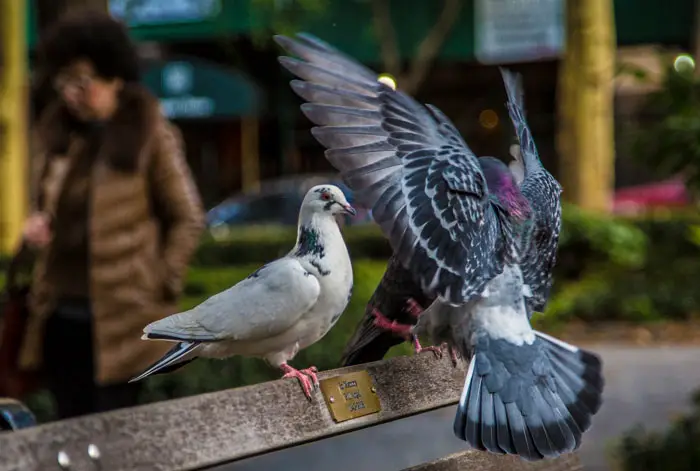
Influence Of Visual-Acoustic Cues Interaction
Let’s see how the visual and acoustic stimuli will work together to influence their mate selection and courtship behavior:
A few bird research institutions researched the response of pigeons on audio, silent video, and normal videos of opposite-sex pigeons. Generally, the pigeons respond better to audio instead of silent videos.
When the researchers played the silent video of the male pigeons, the female pigeons watched that carefully. Then the hens showed circling, cooing, and spreading tails.
Then, the researchers played audio of male pigeons, and the female ones responded with more significant reactions than before. After that, in the test with videos along with sounds, researchers got a more excellent response from the hens.
Similarly, the intensity of response increased in the same order for the cocks. Upon watching or listening to the hens, they started cooing, hopping, and flapping their wings.
Consequences Of Variations In Visual And Acoustic Cues Interaction
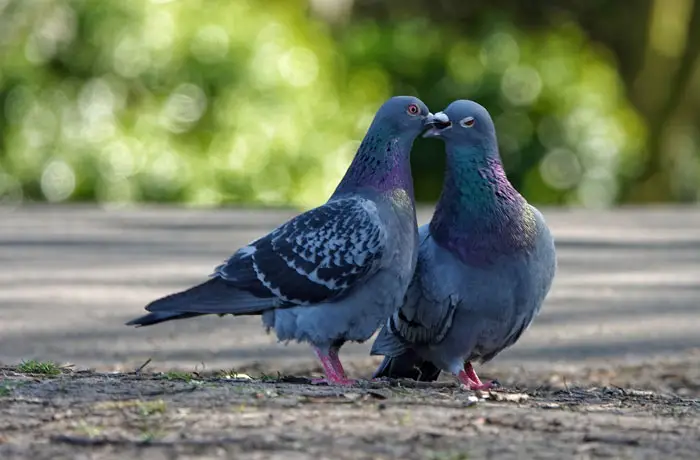
Here are several consequences of variations in the interaction between the visual and acoustic signals:
- The female pigeon can reject the male pigeon in sexual selection due to lack of coo or bow during the courtship period.
- A cock can make cooing noise, indicating its reproductive maturity or interest in a hen. Any imbalance in the auditory and visual stimuli can confuse the female pigeon.
- Sometimes, mis interactions between these two cues can scare the female pigeon away.
Conclusion
Pigeon mating behavior cues consist of both visual and auditory stimulations. Throughout this article, we discussed the role of visual and acoustic cues in pigeon mating behavior. Both of these cues work for the breeding and reproduction success of the bird.
According to animal behavior experts, the pigeon will respond significantly to multi-sensory stimuli instead of single stimuli. In the case of single stimuli, the auditory stimuli are more prominent than the visual stimuli. To learn more explicitly, you need to conduct proper avian ecology research.
